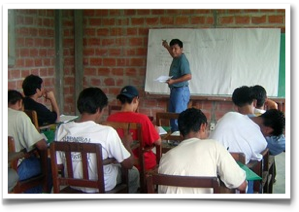Sicirec Charity
Restoration and lasting protection of tropical forests
Project aspect explanation
1. Nature protection
This includes the contributions to conservation and restoration of the biodiversity which can be realised through protection and realisation of cohesive networks of nature reserve and habitat.
Concrete examples of this are:
- The purchase of land destined for nature reserve;
- The fencing in of nature reserves;
- The payment of annual compensations to local farmers for leaving the land unspoilt (biorights).
A condition for this is the connection of nature reserves realised by our projects with surrounding nature reserves and primary forests through the realisation of ecological corridors.
2. Development aid
This includes social-ethical projects which create employment opportunities and improve the income of the population in afforested areas in developing countries.
Concrete examples of this are:
- The financing of seeds, reforestation and crops for sustainable forestry and agriculture by smallholders;
- The creation of new employment opportunity through the development of ecotourism;
- The guidance and training of local smallholders in the transition to a more efficient land use and sustainable forestry and agriculture methods.
3. Awareness
This includes projects which increase the awareness of the local population of the negative results of deforestation, such as erosion, poor drinking water and local climate change.
Our projects should improve the fusion of agriculture and nature protection.
Concrete examples of this are:
- The provision of information to communities on their interest in nature protection and sustainable forestry and agriculture;
- The development of educational modules on ecology for schools and farmer cooperatives;
- The provision of information to farmer cooperatives and local governments on the possibilities of integration of production area and nature reserves and the implementation of projects demonstrating this integration.




